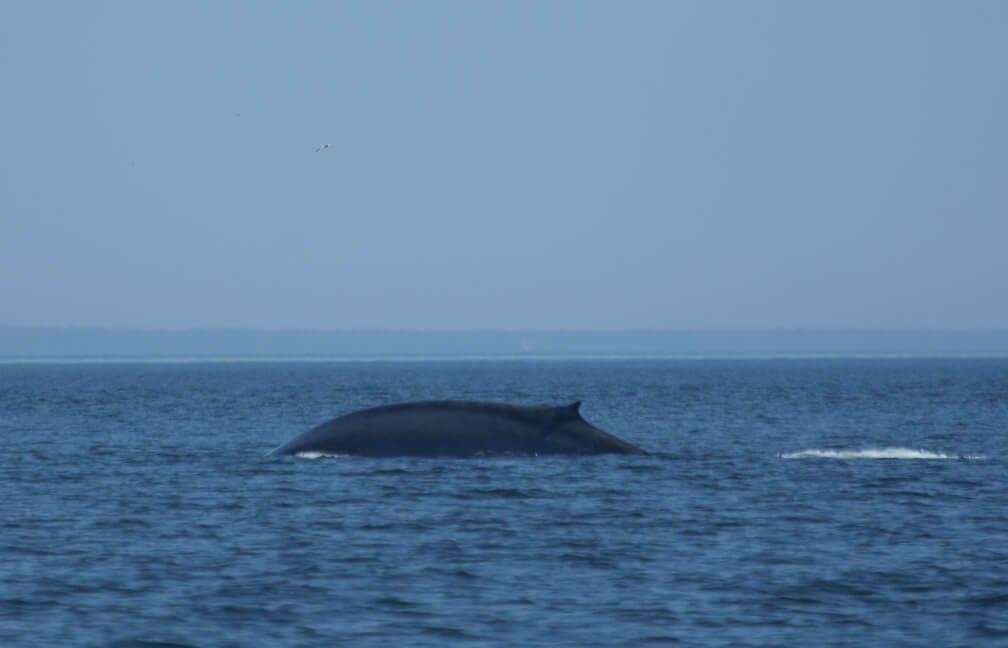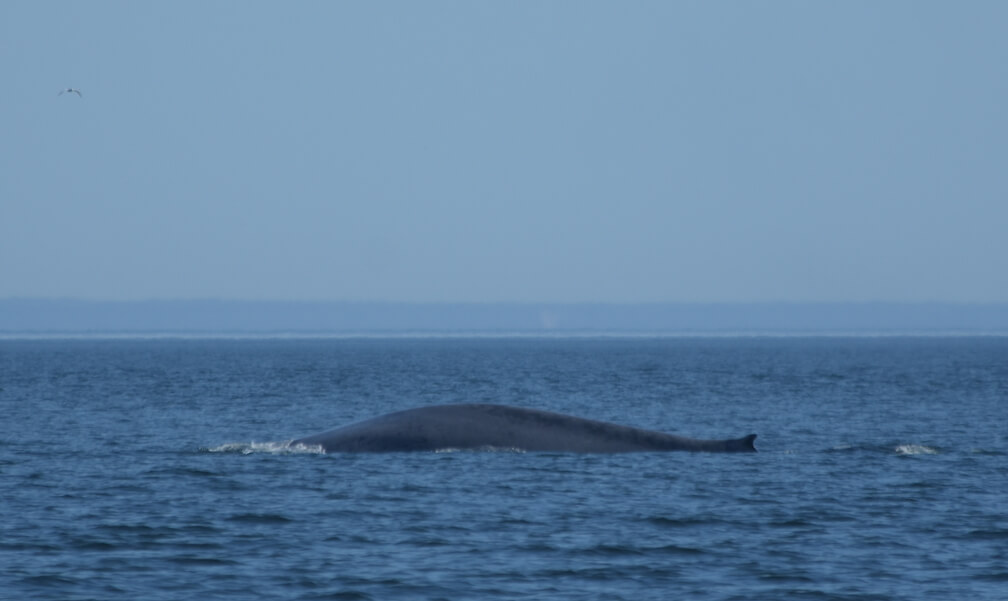By Maude-Émilie Bourque
Sunday, August 25, 2019. I leave for Grandes-Bergeronnes at the crack of dawn with my equipment: camera and 400 mm lens, GPS, voice recorder and floater suit. It’s 8:30 when we set out on the first cruise of the day. The weather conditions and the behaviour of the humpback and minke whales spotted at our first observation site allow me to take a number of beautiful shots. The end of the cruise is approaching when our captain receives a radio call and clues me in that we are going to leave the site, as a “big one” has apparently been seen.
We arrive at the meeting point where other boats are already present. The stakeout begins. We’re running short on time to make an observation of the giant and will have to leave shortly to return to the docks. The excitement on the boat is palpable. After waiting immobilized for about fifteen minutes, a spout of impressive height appears one nautical mile on our starboard side. Our captain redirects the boat in an instant. Five Zodiacs are now heading to the same spot. Camera in hand and eyes glued to the viewfinder, I’m ready, but most of all I don’t want to miss anything. Thar she blows!
Blurred shots accompanied by a slight disappointment; the whale appears dark like a fin whale, though the animal is significantly larger. I’m puzzled, but I keep both eyes open and the camera ready. One last breath before a dive that would last about twenty minutes (long enough to lose track of the individual) and therefore my last chance not only to photograph but also to observe a species I that had eagerly awaited for several weeks. We are at the regulatory distance (400 metres) and the size of my lens does not allow for ultra-detailed pictures, so my photo study represents the best I could do. I can now go back to the office to download my first pictures of a Balaenoptera musculus. On the screen, one can distinguish the blue whale’s beautiful bluish-grey colouring.






